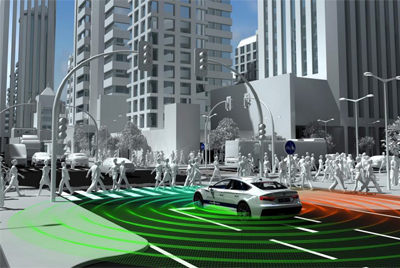 The importance of digitalization in the industry has grown significantly in the last ten years. The shift towards a connected vehicle and a digital vehicle value chain with new business models has consequently given rise to new demands in development technologies. These demands will lead to the evolution of the currently adopted state-of-the-art processes, methods, and tools used in vehicle development. The following megatrends are emerging as driving forces: 1) Advanced driver-assistance systems, active safety, and automated driving and comfort; 2) Electrification to reduce CO2 emissions; 3) Connectivity and integration with the Internet of Things; 4) Advanced security due to the increasingly connected and software-connected world.
The importance of digitalization in the industry has grown significantly in the last ten years. The shift towards a connected vehicle and a digital vehicle value chain with new business models has consequently given rise to new demands in development technologies. These demands will lead to the evolution of the currently adopted state-of-the-art processes, methods, and tools used in vehicle development. The following megatrends are emerging as driving forces: 1) Advanced driver-assistance systems, active safety, and automated driving and comfort; 2) Electrification to reduce CO2 emissions; 3) Connectivity and integration with the Internet of Things; 4) Advanced security due to the increasingly connected and software-connected world.
Addressing these automotive industry challenges was the topic of the 10th Graz Symposium Virtual Vehicle that took place in Graz, Austria, in June. The highlight was the K2 Digital Mobility - Context-Embedded Vehicle Technologies project, approved by the Austrian government and funding agencies. The new COMET K2 Excellence Research Programme driven by Virtual Vehicle Research Center will start in January 2018. A total project volume of € 48 million until 2021 is expected, and CISTER/ISEP is one of the partners.
Researcher Eduardo Tovar participated in the symposium, with CISTER being the only partner of the K2 Digital Mobility project. The unit will actively contribute with its in-depth knowledge on real-time embedded computing in a set of selected topics, and will therefore have the chance to collaborate with key industrial players like Virtual Vehicle (leader of the project), AVL List, Audi, BMW, Jaguar Land Rover, Siemens, among others from a total of more than 100 project partners.
Once again, our research unit sees its strong efforts in establishing effective collaboration with industrial partners paying off, and therefore increasing its value in technology transfer activities, and maintaining its leading role in cutting-edge research and technology for the automotive industry in the European space in the coming years.

